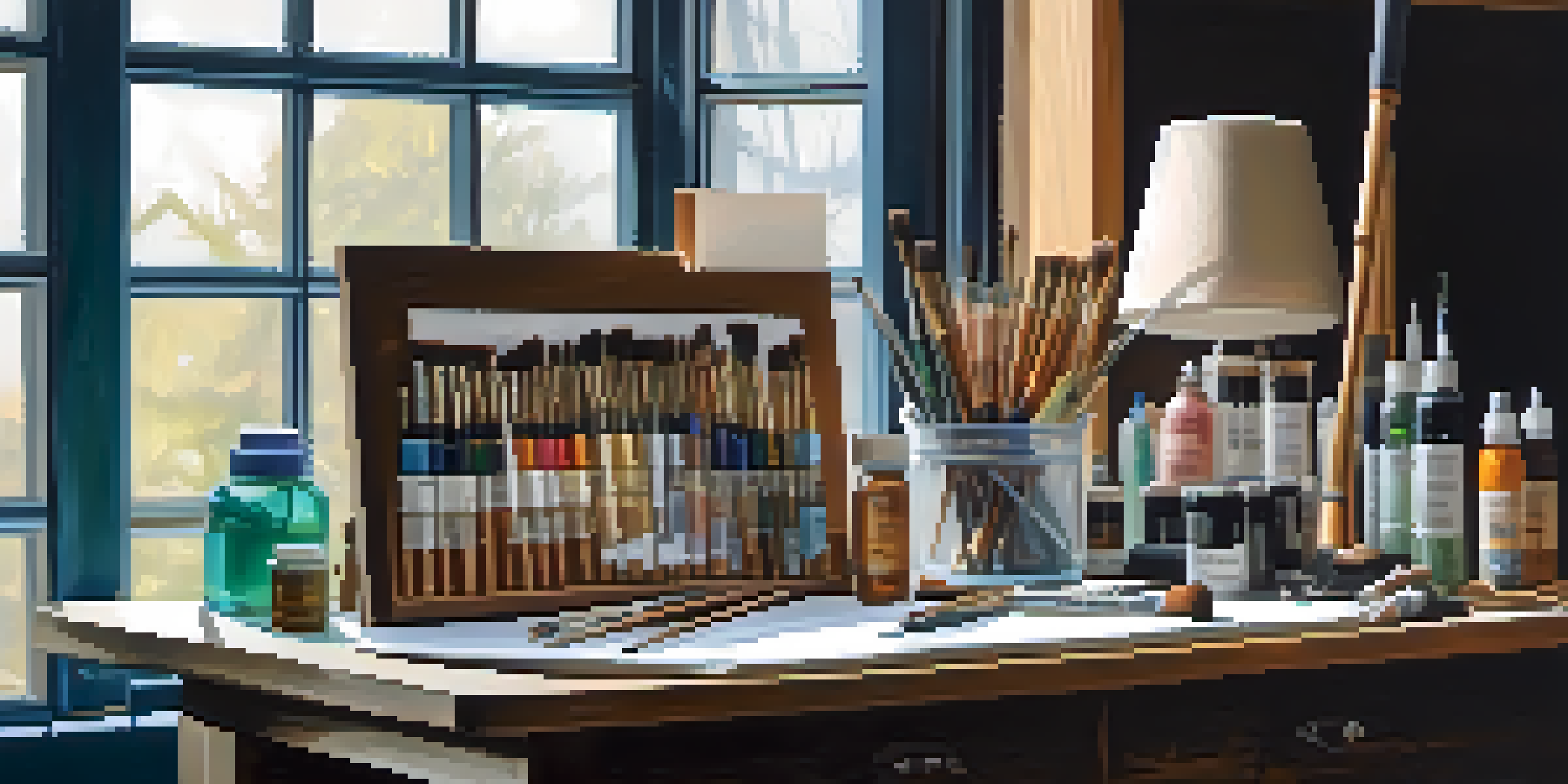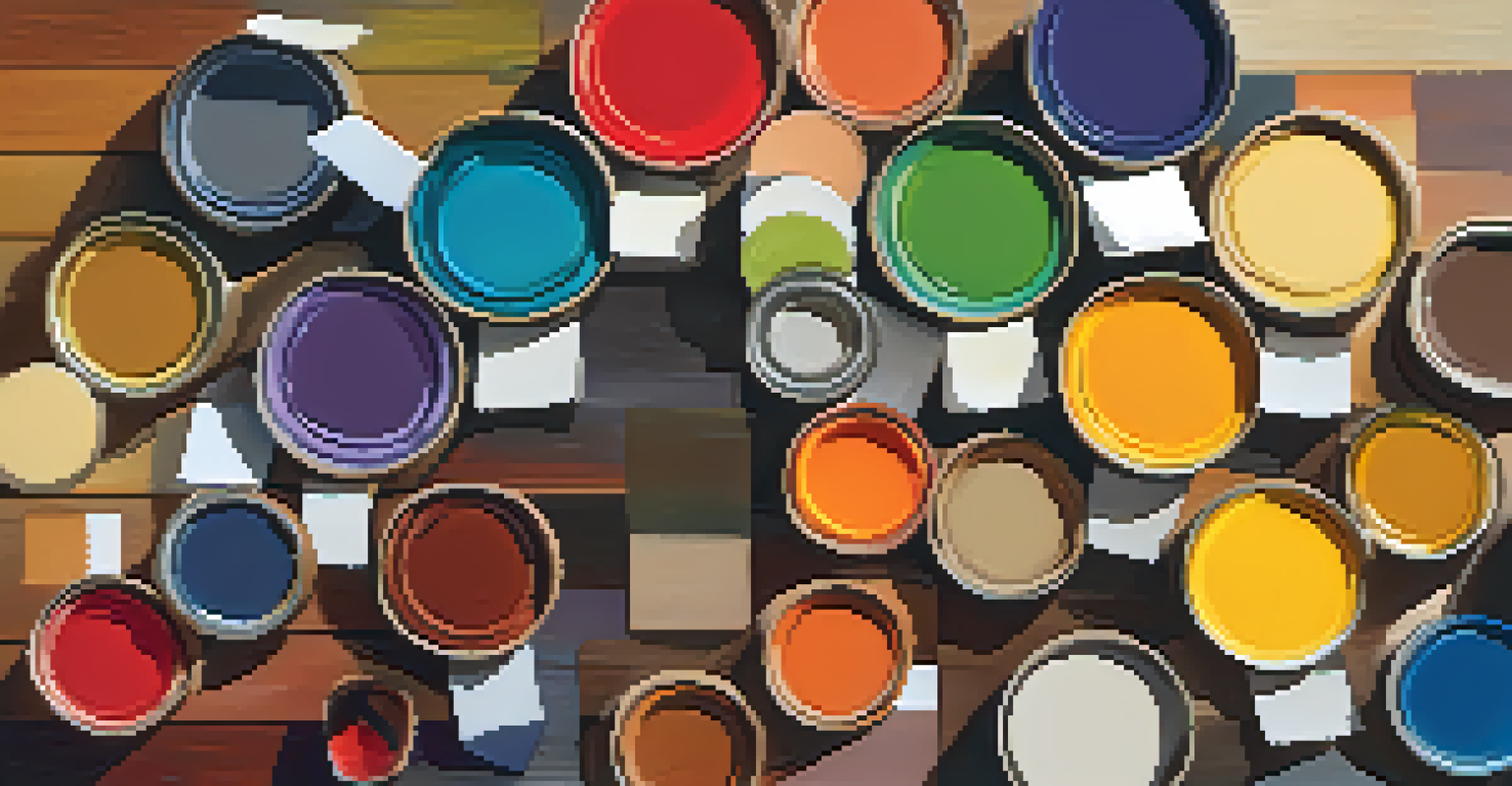The Role of Additives: Enhancing Paint Performance and Quality

Understanding Additives: What They Are and Why They Matter
Additives are substances added to paint formulations to enhance specific properties. They can improve anything from durability and drying time to color retention. Think of them as the secret ingredients in your favorite recipe; they transform a good dish into a great one.
Paint is a living thing that responds to its environment and needs additives to enhance its performance and longevity.
In the world of paint, additives play crucial roles that go beyond mere color. They can help prevent issues such as mildew growth, enhance adhesion, and improve flow and leveling. This ensures the paint goes on smoothly and looks flawless once it's dry.
Without additives, paint would lack the performance features we often take for granted. Just like salt enhances the flavor of food, additives can dramatically improve the overall quality and longevity of paint products.
Types of Additives and Their Functions in Paint
There are several types of additives, each serving distinct functions. For instance, surfactants help reduce surface tension, aiding in better paint application. Meanwhile, biocides keep fungal and bacterial growth at bay, ensuring your paint remains fresh and vibrant over time.

Another common additive is a thickener, which helps achieve the desired viscosity of the paint. This means you can apply paint with ease, whether using a brush or a roller. It's like having the perfect consistency in baking; too thick or too runny can ruin the final product.
Additives Enhance Paint Performance
Additives improve paint properties like durability, drying time, and color retention, making them essential for achieving high-quality finishes.
Additionally, there are additives designed to enhance weather resistance. These can protect against UV rays and moisture, prolonging the life of the paint and keeping its color true. Just as sunscreen protects your skin, these additives shield your walls from the elements.
How Additives Enhance Paint Durability and Longevity
Durability is a key factor for any paint, especially for exterior applications. Additives like anti-corrosives and UV stabilizers improve resistance to harsh weather conditions. Imagine your paint as armor; these additives help it withstand the test of time.
The best paint is not just about color; it’s about how well it performs and lasts over time, which is where additives come into play.
Moreover, additives can minimize wear and tear from everyday use. For instance, slip agents can reduce scuff marks on painted surfaces, keeping them looking new for longer. Just like a good pair of shoes, the right additives can help maintain that fresh appearance even after heavy use.
In commercial applications, the need for durability is even more pronounced. Paints used in high-traffic areas benefit significantly from additives that enhance abrasion resistance, ensuring they remain intact and visually appealing despite constant use.
Improving Aesthetics: The Role of Additives in Color and Finish
Additives also play a vital role in the aesthetics of paint, influencing color retention and finish quality. Pigment dispersants, for instance, help achieve the vibrant colors we love by ensuring even distribution of pigments. It’s akin to ensuring all the ingredients are mixed well in a batter for a perfect cake.
Furthermore, additives can influence the sheen of the paint, allowing for a range of finishes from matte to glossy. This versatility means that homeowners and professionals can choose the perfect look for any space. Just like choosing the right outfit for an occasion, the finish can make all the difference.
Types of Additives and Their Roles
Different types of additives serve specific functions, such as surfactants for better application and biocides for preventing mildew.
Finally, additives help improve the overall clarity and brightness of colors. This ensures that painted surfaces not only look good but also maintain their visual appeal over time, much like how a well-kept garden continues to bloom beautifully.
The Science Behind Additives: Formulation and Compatibility
Creating effective paint additives involves a deep understanding of chemistry and formulation. Manufacturers must consider how each additive interacts with others to achieve desired results. It’s similar to a team sport; every player must work in harmony for the best outcome.
Compatibility is crucial; using the wrong combination of additives can lead to issues like separation or reduced effectiveness. This is why manufacturers conduct extensive testing to ensure their products perform well together. Just as in a recipe, the right balance of ingredients is essential for success.
Ultimately, the formulation process is about blending art and science. Paint manufacturers strive to create products that not only perform well but also meet aesthetic expectations, resulting in paints that are both functional and beautiful.
Environmental Considerations: Eco-Friendly Additives in Paint
As sustainability becomes increasingly important, the paint industry is adapting by introducing eco-friendly additives. These alternatives aim to minimize environmental impact while maintaining performance. It’s much like choosing organic ingredients for a dish; better for the planet and often healthier.
Eco-friendly additives can enhance biodegradability and reduce volatile organic compounds (VOCs), which are harmful to both health and the environment. This shift is not just a trend but a necessary evolution in how we think about paint and its effects.
Eco-Friendly Additives for Sustainability
The paint industry is increasingly adopting eco-friendly additives that minimize environmental impact while maintaining performance.
With these advancements, consumers can make informed choices that align with their values, ensuring that their paint projects contribute positively to the environment. Just as we’re becoming more mindful of our food choices, we can now do the same with our paint selections.
The Future of Additives in Paint Technology
Looking ahead, the role of additives in paint technology is poised for exciting developments. Innovations in materials science may lead to new additives that enhance performance even further. Imagine paints that can self-repair or change color with temperature; the possibilities are endless.
Moreover, as the demand for sustainable solutions grows, we can expect to see more advancements in eco-friendly additives. This shift will not only benefit consumers but also the environment, creating a win-win situation.

In conclusion, the future of paint additives is bright and full of potential. As we continue to explore new technologies and methods, we can look forward to paints that meet and exceed our expectations, both in performance and sustainability.